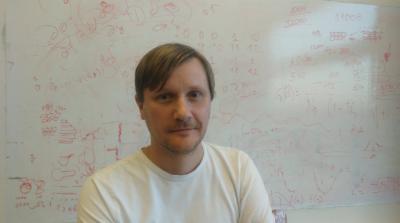Eugene Katrukha
Abstract:
Single molecule microscopy for the study of intracellular transport and cytoskeletal dynamics
For the last ten years, there was explosive growth of biological microscopy methods allowing imaging under diffraction limit. Although united under one common term "superresolution microscopy", these methods differ from each other in their optical setups, sample preparation and limits of application. It's not always easy to find the best one for a specific problem, taking into account possible technical details, setup costs, scientific background, and easiness of operation. In my talk, I'm going to describe "end-user" experience of setting up PALM/STORM, STED, SIM and expansion microscopy techniques for the study of intracellular cytoskeleton (actin, microtubules) and active transport. I will compare these methods by an average spatial resolution, a possible volume of imaging, sample preparation, cost and possible artifacts.
Biography:

Dr. Eugene Katrukha currently holds a senior scientist position at the Cell Biology Department at the Faculty of Science at the University of Utrecht, the Netherlands. He was trained in biophysics and applied mathematics and graduated from Moscow Institute of Physics and Technology in 2003. He defended his PhD on mathematical modeling of non-linear microtubule dynamics at the National Scientific Center of Hematology, Moscow, Russia in 2007. In parallel to theoretical studies he was working as a research scientist in the Biology Department of the drug discovery company ChemDiv, Inc, where he established and supervised large-scale robotic drug-bioscreening facility and participated in joint projects with Eli Lilly, Merck-Sertono and many others.
He did his first postdoctoral research at the Department of Computational and Systems Biology in the University of Pittsburgh, where he theoretically studied organization of microtubule network in cultured fibroblasts. At that time he closely collaborated with the Cell Biology Division of Utrecht University, where he later moved for the second postdoc (in 2011) and received a permanent staff position (2016). His expertise in physics and mathematics provided theoretical background and quantitative characterization of experimental microscopy data for a set of projects: study of drugs effect on microtubules, transport of intracellular cargo and mechanical deformations of cytoskeleton. Currently he is focused on the microscopy of single molecules (including superresolution localization microscopy) and development and sharing of software image analysis tools.

















